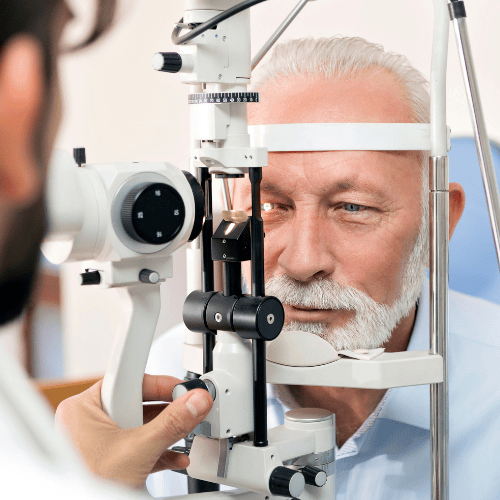A few vision tips as the world recognizes Eye Health Month
This month is Eye Health Month, and as we do each October, optometrists across Canada promote the importance of eye examinations and preventive eye care. This year, the theme of Eye Health Month is “Canadians and Screen Time –— Be Kind to Your Eyes.”
BlackBerrys, iPods, PCs, TVs and cell phones — the rapid increase in communications technology has led to major improvements in the efficiency of information transfer. However, this evolution has also led to a significant increase in the amount of time we spend in front of digital screens over the past five years. What’s more, the average users of these technological conveniences are not just teenagers or young adults. In fact, the Canadian baby boomer population is spending at least seven hours a day in front of potentially eye-straining devices.
New data from Leger Marketing shows that compared to five years ago, women baby boomers aged 45–54 are reporting higher usage of eye-straining devices versus male boomers, and as a result are suffering more eye and vision ailments than other age groups. Computers have exploded in popularity as more and more women use them to keep track of their busy lives and those of their families.
Many of these folks experience symptoms such as eyestrain, headache, fatigue, dryness, itchiness and light sensitivity. When related to the viewing of digital screens, these eye problems are referred to as Computer Vision Syndrome.
Try these helpful tips to minimize the effects of Computer Vision Syndrome:
- Follow the “20-20-20” rule: Every 20 minutes of screen time, take a 20 second break to blink and focus your eyes on something 20 feet away.
- Position your computer screen so that the very top edge of your monitor is at your eye level. This means you will be looking slightly downward at your screen most of the time, which relaxes your lid muscles and decreases the dry eye that results from tear film evaporation.
- See your optometrist for an eye exam, to maintain eye and vision health. If you are over 40 years of age, your eyes are probably changing. You may have special requirements, such as a special pair of “computer glasses,” custom designed for computer use.
While we’re talking about being kind to your eyes, let’s take the time to remember those in need. There’s a terrific charity known as Optometry Giving Sight, which targets the prevention of blindness and impaired vision requiring glasses.
An estimated 670 million men, women and children in the developing world are blind or visually impaired simply because they cannot afford, or lack access to, an eye exam and a pair of glasses. The absence of this “luxury” of clear vision can often mean a life of poverty for those who can’t see well enough to earn a living. Optometry Giving Sight addresses this need by supporting programs that offer not only eye exams and glasses in countries with little or no access to them, but that establish the infrastructure and human resources required for sustainable, quality vision care.
On Oct. 7 at Mountain View Optometry, we will again be fundraising for Optometry Giving Sight by donating all professional fees from both our locations.
There will be an added bonus this year in the form of a silent auction for eyewear and other goods donated by several of our key suppliers and local businesses. All proceeds will be donated to Optometry Giving Sight. Our Fundraising Chair is Amber Grove, who has done a fantastic job organizing our event last year and has been working steadily on this one.
You can find out more about Optometry Giving Sight by going to www.givingsight.org.











